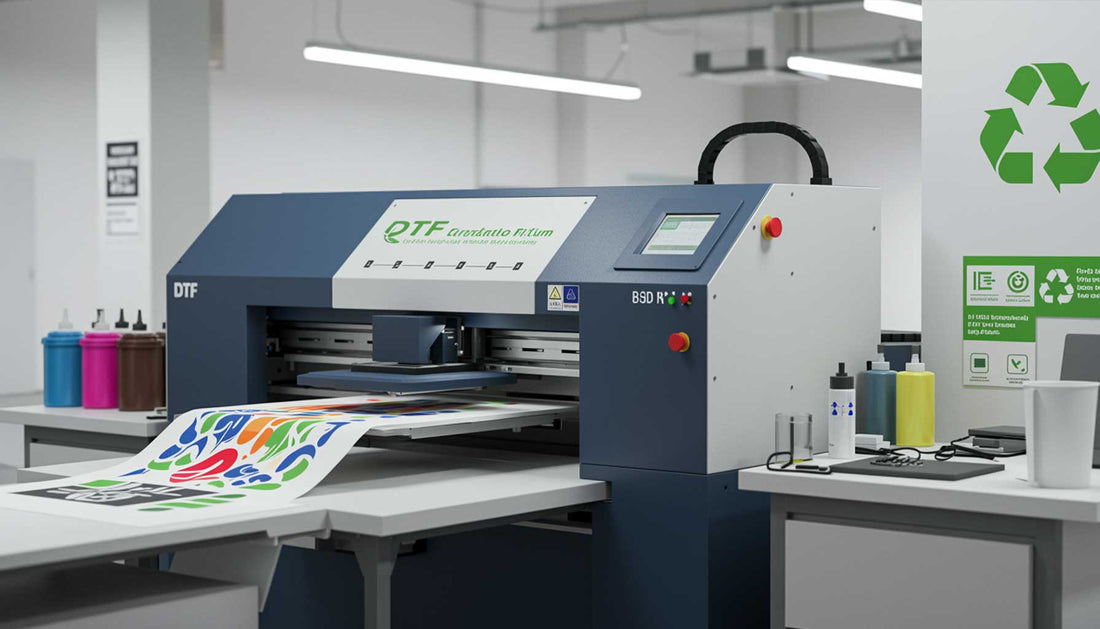Sustainability is now a key criterion in production choices, especially in the apparel industry. DTF (Direct to Film) printing is one of the most innovative printing techniques, but how environmentally friendly is it really? In this article, we will analyze the sustainability of DTF printing compared to other methods and look at ways to reduce its environmental footprint.
1. Environmental Benefits of DTF Printing
DTF printing offers several environmental advantages:
- Reduced Material Waste : Unlike screen printing, which requires the creation of frames, DTF printing does not require unnecessary materials, reducing waste.
- Minimal Water Consumption : DTG (Direct to Garment) printing requires frequent washes to stabilize the ink, while DTF does not have this need, saving water.
- Accurate Printing & Waste Reduction : DTF technology allows for high-resolution, error-free printing, avoiding unnecessary printing and reducing waste of raw materials.
2. Potential Environmental Impacts
Although DTF printing offers several benefits, there are some challenges to consider:
- Use of Synthetic Inks : DTF inks contain polymers and chemicals that may not be 100% biodegradable.
- Transfer Film Waste : DTF transfer films, if not recycled properly, can contribute to plastic waste.
- Energy Consumption : The thermal transfer process requires energy, which can increase the overall energy footprint of printing.
3. Sustainable Practices for DTF Printing
To reduce the environmental footprint of DTF printing, the following practices can be implemented:
- Use of Ecological Inks : There are newer versions of water-based inks that reduce the impact on the environment.
- Recycling Transfer Films : Collaborations with recycling programs or finding ways to reuse the film.
- Energy Use Optimization : Selection of energy-efficient heat presses and machinery.
- Print on Demand : Reducing overproduction and limiting waste.
4. How DTF Compares to Other Printing Methods
| Printing Method | Viability | Water Consumption | Waste of Materials |
|---|---|---|---|
| DTF | ⭐⭐⭐ ⭐ | Low | Moderate |
| DTG | ⭐⭐⭐⭐ | High | Low |
| Silkscreen printing | ⭐⭐ | Moderate | High |
| Sublimation | ⭐⭐ | Low | Moderate (but only for polyester) |
5. Conclusion: Is DTF Printing a Green Option?
DTF printing is certainly more environmentally friendly than traditional screen printing and in some cases than DTG. However, to be truly sustainable, additional actions are required such as the use of eco-friendly inks and proper recycling of materials. With the right practices, DTF can be a great solution for those who want to combine quality with eco-consciousness.
Are you looking for a sustainable way to print for your business? Contact us for high-quality DTF printing with a reduced environmental footprint!

